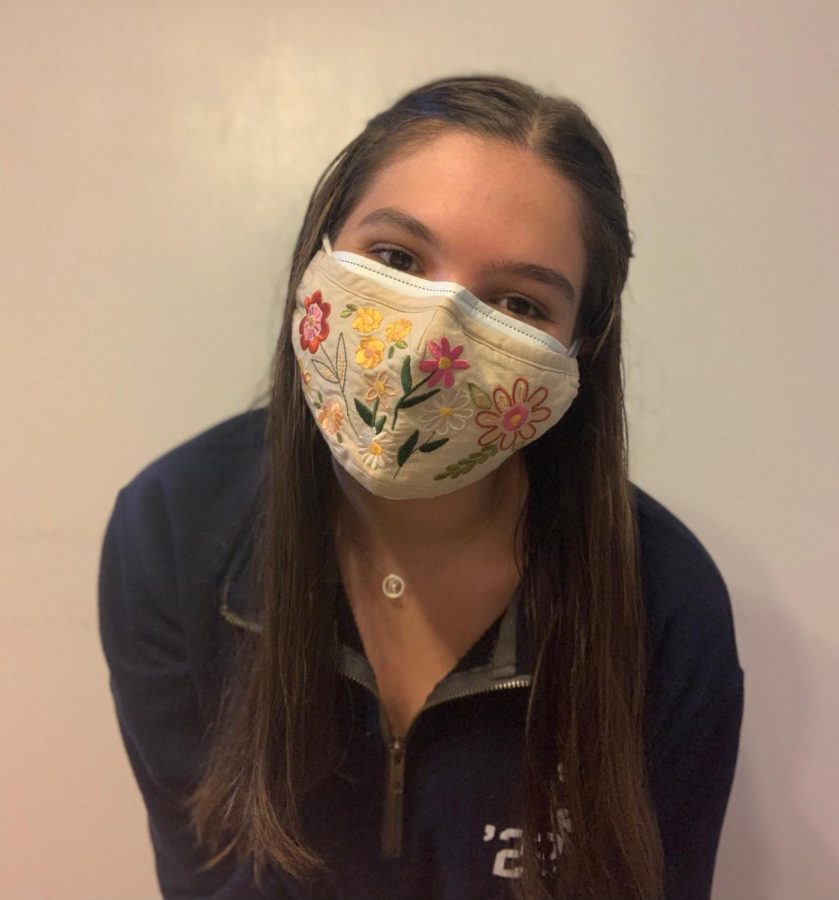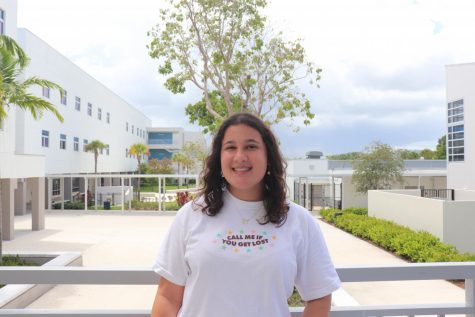The Rise in Double Masking and its Effectiveness
Palmetto junior Catherine Bales, wears a cloth mask over her disposable mask to ensure the safety of herself and others. (Photo courtesy of Catherine Bales)
February 26, 2021
The Center for Disease Control recently announced their endorsement of double masking, prompting Miami Palmetto Senior High School students to start double masking. Participating in this trend allows people to better protect themselves from COVID-19 and its new, more contagious variants.
Despite this announcement from the CDC, Miami-Dade County Public Schools has not confirmed or denied the effectiveness of double masking.
“At this point, the evaluation of the effectiveness of double masking is still ongoing…[but] MDCPS endorses methods that offer students more protection,” the Director of School Operations for MDCPS Mark E. Zaher said. “What we know and recognize is that there is nothing that can replace an N-95, surgical or other equivalent masks.”
N-95 respirator masks do offer the best coverage available, yet the CDC does not recommend the general public use N-95 masks due to a shortage of masks for healthcare workers. Instead, students like Palmetto junior Catherine Bales rely on KN95 masks as an alternative.
“I started double masking at school the first day I returned for my junior year, so Oct. 9,” Bales said. “The only time I don’t double mask is when I’m dancing at my studio; there I wear a KN95, and I feel just as safe as if I were double-masked.”
According to 3M Science, KN95 masks filter out 95% of micron particles, and Joseph Allen, an associate professor at the Harvard T.H. Chan School of Public Health, found that wearing a surgical mask under a cloth mask filters out 91% of particles. Both options seem relatively equal in efficacy.
A surgical mask does not provide a secure fit, as the gaps it leaves can allow unfiltered air to escape. By wearing a cloth mask over a surgical mask, students can close these gaps and better protect themselves and their peers. Additionally, the cloth mask should have a tight weave, and 100% cotton masks are optimal over synthetic fabrics.
“We recommend that students use masks that are made of tightly woven, breathable fabric,with a nose wire,” Zaher said. “If you hold up the mask to a bright source and the mask blocks the light, it should work well.”
Students who choose not to double mask can still increase their protection by utilizing the CDC endorsed “knotting and tucking” method. This process includes knotting the ends of the mask where it meets their ears and flattening and tucking the edge of the mask for a tighter seal.
“The mask should fit snugly against the sides of your face. The slipping of the loops over your ears, or tying the strings behind your head or similar techniques… is helpful,” Zaher said.
These methods should help students who attend school physically to feel safer in regards to contracting the virus, but they can also make them feel uncomfortable.
“Some days I wish I was just wearing one mask because my ears are sore, but I realize how serious protecting myself against COVID-19 is,” Bales said.
The CDC found that single surgical and single cloth masks only filter out 42% to 44% of particles; thus, students should really try to double-mask. To combat the uncomfortable straps that can cause ear pain, students can purchase masks that go behind their necks or attach to their glasses.
“I double mask for myself, for my mom, my brother, my dad, my grandmothers, for those who are at risk and for those who have lost loved ones because of this pandemic,” Bales said. “Double masking isn’t just for me, but for everyone around me.”











